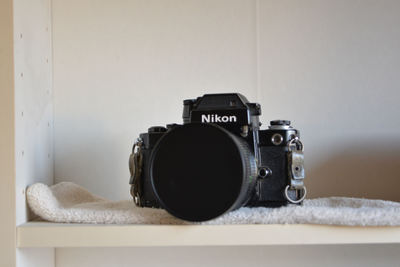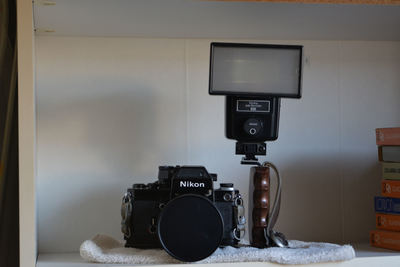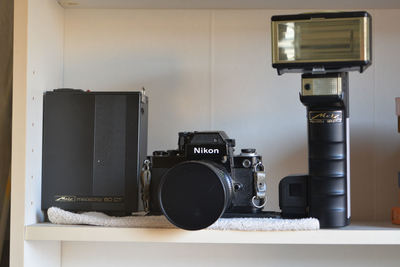Having been into Film Photography since college I will be attempting to transfer my slides, prints and color negatives to the digital world. I have a real good slide duplicator that tested nice. It is not like I am in a rush anymore. I do not own PhotoShop, is that something I need to buy?
My old camera was a Nikon F2SB. My current camera is a Nikon D610. I currently do not need a better camera.
Thanks for any tips and tricks.
I’m currently using this.
With a 1 to 1 Tonika macro lens.
This is the best way to capture all of the details from slide film and negatives. It takes forever if you have a lot to convert but the result I got were better then photo paper development especially when you can post process the image and do some color correction.
My jaw dropped when I seen how nice film actually is compared to digital even though it is captured digitally.
The cheaper scanners are faster but the results look much worse.
I hope that helps.
Thanks Dev. I need to spread out my time so there really is no rush (ha). Right now I am pulling out all my old flashes (and cameras) out of the closet to test the capacitors and re-charge the batteries. I try to do that every 6-8 weeks. Found one lens that was kinda sticky. Applied slow heat usually temporarily resolves that issue. I have yet not tried using my slide duplicator for negatives - will give that a try.
I will be attempting to use my Elicar 1-1 Macro for my duplicating effort.
Thanks Dev. I need to spread out my time so there really is no rush (ha). Right now I am pulling out all my old flashes (and cameras) out of the closet to test the capacitors and re-charge the batteries. I try to do that every 6-8 weeks. Found one lens that was kinda sticky. Applied slow heat usually temporarily resolves that issue. I have yet not tried using my slide duplicator for negatives - will give that a try.
I will be attempting to use my Elicar 1-1 Macro for my duplicating effort.
Let me know if you need any help with the duplication. I have only done slide film so far. I still have much to go before I do negatives.
Any 1 to 1 macro will be optimal with flash if you have a converter like mine. Set the camera and flash to manual mode and expose to the right and on the edge of blowing out so you saturate the sensor and have the least amount of noise. Then find out on the internet for the MTF chart on the macro lens for aperture setting that has the maximum sharpness especially in the corners and use that value. If you stop down too much you run into diffraction.
One last tip. Get one of those soft big paint brushes and use that to dust the negative before capture but make sure the brush touches nothing else to avoid contamination.
Also know which side is which otherwise you will have mirrored letters on any writing from the photograph.
Its tedious work but relaxing.
I've got a Nikon Coolscan IV dedicated 35mm film scanner. It can take 35mm in 6 frame strips and scan it while applying preset color settings. Scans are high enough resolution to blowup to large posters without significant quality loss. Having digitized a lot of 35mm negatives for myself and for professional use, the following are my 2 cents on how to do it.
1) Work in as close to a dust free environment as possible
2) Clean the film! @dev had a good recommendation of using a large paintbrush. I prefer compressed air. If there is residue from the development process or anything that won't come off, use a film safe cleaner and a glasses cloth. Be careful using liquids on the back side of the film. Can have bad results.
3) Scan it! I've got a nice dedicated film scanner but it is not necessary. It was also more expensive than I would ever care to admit, even to myself. However, I was shooting enough film that I felt it was worth it. The Megapixel equivalent of 35mm film is highly debated but really it varies film type to type, and iso to iso. If you want to get technical, you can get the grain density specs of a particular film and convert it to MP. Depending on the setup it could have anywhere from a 4MP equivalence to a 20 or more MP equivalence. Keep that in mind when choosing your device to digitize film. You could be leaving information on the table or, conversely, just adding noise to the image.
--If using a dedicated scanner, I prefer to not have the scanner invert the colors for me.
4) Making a negative into a positive:
You ask if you need photoshop. I feel you don't. However, if you are digitizing negative film, you need some sort of photo editing software. I prefer GIMP. GIMP is a free software similar to photoshop. The only tools I use in it are the invert effect and the color levels. I go through the 3 channels for each photo and slide around the upper, lower, and middle markers for each until the image on the screen has the colors I remember from when I took the photo. It's weird. I don't have a photographic memory by any means, but, when I take a photo and look at the film, I can vividly remember what the colors looked like. If you want some more information on working the color channel tool, let me know I'll send some screenshots.
All in all, I hope you have fun looking through and digitizing your photos. Whenever I digitized mine, it wasn't for me. I didn't care that I only had prints. However, I found it made them much easier to share with others when I had digital copies.
From my observations after doing many 50 megapixel captures I think (making a wild guess) is about 20-30 megapixels of information for film if there is a lot of information. I think most people from back in the day with cheap photo development like ritz and Costco never seen the full potential of film.
When I was doing the research on this a few years ago it was suggested to me that if you use any photo development tools it’s best to make sure you keep the vintage nature of the photograph intact. In other words you are curating the photos it’s best not to try and modernize them with photoshop styles or settings to enhance them.
So when I went through all my film, my goal was to produce digital copies that were as close to the actual film as possible. The Nikon Coolscan IV, while awesome in terms of resolution and speed, didn't always quite get the colors right. Hence the messing around with the colors in gimp. However, once you have a master set of scans that are basically exactly the same as the film, I don't see any reason to be a 100% purist and not mess around with your photos, as long as you have those original scans.
As for your comment on the quality of Costco development, I have to agree. You've gotta think, they are just running roll after roll through the same chemicals with default settings. I personally always try to overexpose half a stop so I'd end up with blown own out colors from Costco. Also, all those different roll types leaching into the huge chemical baths and the rigid development automation can't get the best results 100% of the time. For me, I always develop my own photos and I find, with a little finesse, I've been able to achieve insane results. However, on the flip side, If I don't maintain the temps or I mess up my calculations based off of how many rolls I've put through, I end up with shitty results haha. I've never been more nervous than the first time I got a business headshot gig and I was developing the film in my bathroom. I was just thinking the entire time, don't mess up! You've gotta make rent! hahaha
So when I went through all my film, my goal was to produce digital copies that were as close to the actual film as possible. The Nikon Coolscan IV, while awesome in terms of resolution and speed, didn't always quite get the colors right. Hence the messing around with the colors in gimp. However, once you have a master set of scans that are basically exactly the same as the film, I don't see any reason to be a 100% purist and not mess around with your photos, as long as you have those original scans.
As for your comment on the quality of Costco development, I have to agree. You've gotta think, they are just running roll after roll through the same chemicals with default settings. I personally always try to overexpose half a stop so I'd end up with blown own colors from Costco. Also, all those different roll types leaching into the huge chemical baths and the rigid development automation can't get the best results 100% of the time. For me, I always develop my own photos and I find, with a little finesse, I've been able to achieve insane results. However, on the flip side, If I don't maintain the temps or I mess up my calculations based off of how many rolls I've put through, I end up with shitty results haha. I've never been more nervous than the first time I got a business headshot gig and I was developing the film in my bathroom. I was just thinking the entire time, don't mess up! You've gotta make rent! hahaha
Actually let me clarify my comment. I do color correction as well as noise reduction and spot scratch healing. I will also add some stuff on the sliders but what I’m trying to do is reproduce a period representation. What some others do is try to modernize the photo and adding way too much photoshop which is unnatural.
I also can’t stand those stylistic tools that people use that desaturate a modern image to give it A vintage retro look. It looks awful however vintage lenses on modern camera looks pretty good with that gritty feel.
I also learned to develop film including color. My teacher was not a nice guy, a real stickler who was incredibly critical but to his credit made me understand its a serious subject not to be taken lightly.
The moment I have been waiting for. In just a little while Canon plans to unveil the EOS R5 which is the most anticipated camera this year. This is a big deal because Canon was behind for over five years and they decided to innovate and leap frog the competitors.
If anyone remembers the Canon 5D mK2 and what it did for the industry as far as being able to make high quality budgeted movie making for the masses. It set off a revolution that continues to ripple today.
I don't care about the cinema features. Where this camera will help me improve my pictures is close to 8 stops of image stabilization which is unreal. Except for some bulb long exposure shots which most people don't do I can now shoot without the use of a tripod with longer focal lengths at lower light and base ISO. I will also have a better guide for my manual focus lenses since it is mirrorless.
I will be back with a youtube video of the event.
That didn’t go well. Just some more specs confirmed. Overall though it’s a mystery to know how they are achieving 8k raw video full frame without overheating. That’s impressive.
Screw it. After much soul searching I decided to go medium format. I figure I would check this off my bucket list. Plenty of manual focus lenses to make this work.
I spent some time with the medium format camera (Fuji GFX 50R). It is a three trick pony. It's only for fine art, portraiture and landscapes. If you shoot anything else it will spank you badly. You need to slow down and know what you are shooting otherwise you will get some crap pictures from it. The out of focus areas are expanded compared to a typical 35mm full frame. The shutter is so large that it takes time for it to open and close that you need a much higher shutter speed so you don't have any camera shake. Your typical cell phone is a much general purpose camera then this. It looks like I will actually need to upgrade my older back up cameras as they will not cut it for event photography either let alone sports.



